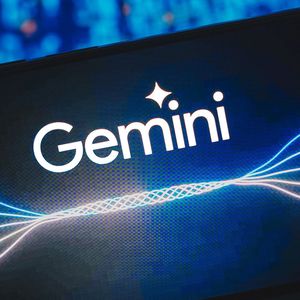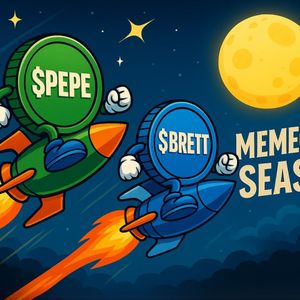In an exclusive interview with BitcoinWorld , we got the chance to speak with Anurag Arjun , co-founder of Avail What is Avail, and what problems does it solve in the blockchain world? Avail is a modular data availability layer and a unified coordination layer for rollups. Think of it as a specialized blockchain that helps other blockchains scale more efficiently – we provide a secure way to store and verify transaction data for multiple blockchain networks. Today, in the L2 space, users are dealing with this incredibly fragmented experience. Their assets are spread across different L2s, and they have to navigate multiple bridges with different wrapped tokens, which introduces unnecessary complexity. We saw this problem emerging during my time at Polygon around 2020, when we were building scaling solutions and realized that without solid data availability at the base layer, you can’t build secure scaling solutions. To address this, Avail is creating a unification framework for Web3. At its core, it’s a modular application development stack that combines three key features – data availability, multi-asset shared security, and interoperability. When it comes to interoperability specifically, validity proofs and proof aggregation enable instant interactions, making the underlying chains invisible and the process frictionless. As unified infrastructure makes cross-chain interactions invisible, the question ‘which chain?’ becomes irrelevant for devs and users. Can you explain what a “data availability layer” is and why it’s important for scaling blockchains? Data availability layers like Avail have become integral as computation moves from Ethereum to Layer-2 rollups. When you move computation off-chain with rollups, you must be sure that all the transaction data is available and accessible to verify those computations. Without that guarantee, someone could theoretically submit invalid transactions, and no one would be able to prove they’re wrong. Many L2s depend on separate DA layers — rather than Ethereum’s built-in DA feature — to scale efficiently. However, these layers often rely on Data Availability Committees (DACs), which depend on a small group of ”trusted” nodes, introducing significant centralization risks. What makes our approach unique is that we use what’s called data availability sampling. Instead of forcing every node to download and verify all the data, which would be incredibly resource-intensive, users can verify data availability by sampling small random pieces. Think of it like quality control in a factory – you don’t need to check every single product to be confident about the overall quality. What makes Avail different from other blockchain infrastructure solutions? It is really about our fundamental approach to data availability. We have developed this system where users can verify data availability themselves. They only need to download small parts of the data but still get strong cryptographic guarantees that all the data exists. We use KZG cryptographic commitments, and users can sample against them, so you do not have to trust any operator to do their job correctly, unlike the aforementioned DAC method. If you look at the DA landscape, several players are trying to solve this problem, but we are all taking different approaches with different trade-offs. Our approach is different because we are validity-proof secured because of our KZG commitments. This means we do not need to rely on fraud proofs or wait through challenge periods. This is more robust because users can verify things themselves rather than relying on committees or long wait periods. We have also built this peer-to-peer overlay system. So even if something were to happen to the Avail chain, the data would still be available and verifiable through this network. Once data is published, it becomes difficult to censor. Additionally, as blockchains proliferate and enter the mainstream, interoperability between siloed networks has become the new holy grail. Avail offers a solution to rollup fragmentation through its three products: Avail DA, Nexus, and Fusion, which together aim to unify the web3 experience. Avail DA is a data availability layer we’ve discussed above; Avail Nexus is a custom ZK-coordination rollup built upon Avail DA to verify and aggregate proofs to facilitate asynchronous cross-rollup interoperability; and Avail Fusion is a shared security solution that will enable users to stake various native blue-chip tokens, along with native tokens of chains building on Avail, to increase economic security across the several layers of the Avail stack. Can you tell us about your recent partnership with Sophon? Sophon is the first-ever Validium built on Avail and recently hit the #3 Validium slot on L2 Beat just two weeks after launching. Sophon aims to be the leading platform for accessible and user-friendly blockchain products, catering to both seasoned users and newcomers. Built as a Validium on Avail, Sophon simplifies blockchain technology, allowing developers and consumers to enjoy its benefits without the common usability hurdles of today’s blockchain applications—such as the need to pay for each on-chain interaction individually. Our partnership with Sophon marks an essential milestone in our efforts to create better alignment between our communities. At the heart of this collaboration is what we call the “unified token initiative,” with the introduction of a new staking pool called stAVAIL, which opens up new opportunities for AVAIL token holders to earn multiple types of rewards through staking. How do Avail’s three components (DA, Nexus, and Fusion) work together? At its core, Avail is about connecting a fragmented ecosystem, streamlining the building process for developers, and enabling chain-agnostic user experiences that rollups, appchains, and dapps will need to go mass market. Avail DA is the first stage of our ecosystem – the base layer providing abundant block space for all the roll-ups and application-specific chains being built. Then we have Avail Nexus – which is interesting because it is a proof composition system built on top of our DA layer. The power here is that any roll-up can use it to seamlessly interact with other roll-ups. What makes this really powerful is that you don’t need to download all the transactional data – you can just take the validity proof and commitment to the data – and that’s enough. You are getting the full security guarantees while keeping things efficient. Avail Fusion is the third piece and it is about bringing external assets like Bitcoin or Ethereum into the Avail ecosystem to significantly improve security. Think of it as a way to leverage the security of established networks to make the entire ecosystem more robust. How does Avail’s approach to unifying rollups improve blockchain scalability and reduce costs? The current situation with roll-ups is that they are all operating in their own silos. When you want to move assets between roll-ups, you typically have to go back through L1, which is expensive and slow. What we are doing is fundamentally different. Because all these roll-ups can use Avail as their DA layer, they share the same security zone. This means one roll-up can verify what’s happening on another roll-up through a single validity proof – you don’t need complex bridge systems or long waiting periods. You are not just scaling individual roll-ups, you are making the entire ecosystem more efficient. What role do validators and light client operators play in Avail’s ecosystem, and how can people get involved? This is a crucial part of our design. We have built a system where validators are essential for network security, but we have also made it possible for regular users to verify data availability through light clients. You don’t need to run a full node – you can verify things even on a smart watch using our data availability sampling. We use a nominated proof of stake system and intend to support around 1000 validators asap – with room to grow to tens of thousands over time. We have carefully designed this to maintain decentralization while staying efficient. Anyone can get involved by either running a validator node or by using our light client network to verify data availability. Where do you see Avail’s technology making the biggest impact in the Web3 ecosystem in the next few years? The path we are on is really about unifying Web3. We currently have our mainnet running with nearly 50 modular chains and over 130 signed partners in testnet. But what excites me most is where this is heading; we are moving toward a future where users don’t have to think about which chain they are using. The most significant impact will come from how we are addressing fragmentation. When you combine our DA layer with Nexus and Fusion, you are creating an ecosystem where different blockchain solutions can work together seamlessly. We are betting that the future of blockchain is not about having one chain to rule them all but about having many specialized chains that can work together effectively. That’s where Avail comes in – we are building the infrastructure that makes this possible while maintaining the security and decentralization that makes blockchain technology valuable in the first place. Stay tuned for more thought-provoking content and engaging interviews on Bitcoinworld.co.in , World of Cryptocurrency & Blockchain News.


















